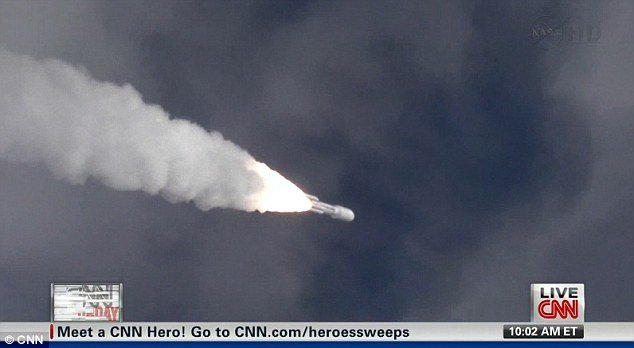
Curiosity, the world’s biggest extraterrestrial explorer has been launched today on a 354 million mile journey to Mars that hopes to discover whether the desolate planet was ever capable of supporting life.
NASA launched Curiosity rover – officially called the Mars Science Laboratory – at 10:02 am ET today into a cloudy Florida sky.
Curiosity, described by one expert as a “Mars scientist’s dream machine”, will use an array of technology to probe the red planet for signs of life.
More than 13,000 curious guests crowded the space centre to view the launch, which is the first one to Mars in four years. It is the first rover launch in eight years.
Some three dozen missions have been launched to Mars, though less than half have been successful.
NASA’s assistant associate administrator for science Colleen Hartman has a theory why so many quests have failed: “Mars is really the Bermuda Triangle of the solar system.
“It’s the death planet, and the United States of America is the only nation in the world that has ever landed and driven robotic explorers on the surface on the surface of Mars, and now we’re set to do it again.”

Curiosity is a mobile lab, the size of a small car, which is expected to be lowered by giant jet pack on to the surface of Mars in August 2012.
Doug McCuistion, director of NASA’s Mars exploration programme said:
“It will be the largest and most complex piece of equipment ever placed on the surface of another planet.”
NASA’s earlier Viking rovers concluded 35 years ago that there was no sign of life, but scientists hope Curiosity’s more sophisticated equipment will reveal more.
It will not be able to detect living organisms in the soil, but it can look for clues by surveying the landscape with high-definition cameras on top of a 10 ft mast.
Curiosity has a laser that can break rocks as far as 23ft away to determine their chemical composition and look for traces of organic compounds.
The rover also carries an instrument that detects methane, a weather station to monitor Martian temperatures, humidity and wind, and a radiation detector that can help to determine if the planet is safe for human visitors.
One of the main tasks of Curiosity, a $2.5 billion mission, will be to discover the source of the methane gas scientists have detected in the Martian air.
Some experts believe that just as cows emit methane on Earth, so micro-organisms able to live without oxygen may be producing it on Mars.
If that is the case, say NASA scientists, then life on Earth may have originally come from the red planet – making us all, in a sense, Martians.
According to their controversial theory, Mars – a smaller planet that would have cooled quicker than Earth after the solar system’s explosive creation – would have had the conditions for life to develop long before our world.
Chunks of Martian rock containing living microbes could have been blasted into space by the impact of asteroids before landing on Earth, starting life here.
Travelling at a tenth of a mile per hour, Curiosity will take two years to complete its mission.
[youtube 7-LudR2pQyU]
[youtube _KLxmGLZQSY]